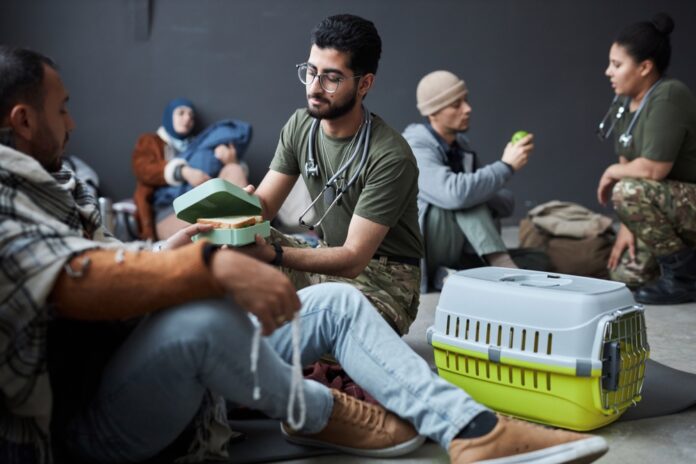As natural disasters become more frequent and intense, the call for compassionate and effective disaster relief volunteers has never been more critical. If you’ve ever felt compelled to help communities rebuild after calamity strikes, now is the perfect time to get involved.
Understanding Disaster Relief Volunteering
Disaster relief volunteering involves providing immediate and long-term support to communities affected by events like hurricanes, earthquakes, wildfires, and floods. Organizations dedicated to this cause emphasize the importance of arriving early and remaining involved in long-term rebuilding efforts to truly make a sustainable impact.
Organizations to Consider
All Hands and Hearts
All Hands and Hearts is an organization that employs a unique volunteer model, collaborating with local residents to build safe, resilient infrastructure. They focus on both immediate response and sustainable recovery efforts, ensuring communities are better prepared for future disasters.
- Volunteer Opportunities: They offer global volunteer programs without any program fee, providing meals and accommodation for volunteers.
- Current Programs: Opportunities are available in locations like Los Angeles County, California, and international sites such as Nepal and Mexico.
Habitat for Humanity
Habitat for Humanity works to help low-income families return to their homes after disasters, focusing on long-term community rebuilding efforts. Volunteers can participate in various initiatives, including home preservation and global village projects.
- Volunteer Roles: Engage in building and repairing homes, disaster response, and community development.
- Donation Options: Multiple ways to support, including one-time or monthly donations, and donating goods to Habitat ReStores.
American Red Cross
The Red Cross’s Disaster Action Teams respond to emergencies, providing emotional and material support to affected families. With volunteers making up about 90 percent of the workforce, they play a significant role in disaster relief.
- Volunteer Roles: Provide emergency support, educate communities on disaster preparedness, and support military families.
- Training: Offers training and certification courses to prepare volunteers for various roles.
Steps to Get Started
1. Identify Your Skills and Interests
Consider what you can offer—whether it’s hands-on rebuilding, administrative support, or language skills like Spanish or Mandarin.
2. Choose an Organization
Research organizations that align with your values and where your skills will be most beneficial. Look into their mission, volunteer programs, and the communities they serve.
3. Complete Required Training
Many organizations provide training to ensure you’re equipped to handle the challenges of disaster response. For instance, the Red Cross offers comprehensive training for its volunteers.
4. Commit to a Timeframe
Determine how much time you can dedicate. Some programs require a minimum commitment—for example, All Hands and Hearts requires a minimum of two weeks for certain programs.
Volunteer Opportunities
Local Opportunities
You don’t have to travel far to make a difference. Organizations like the Red Cross have local chapters where you can respond to emergencies within your community.
International Programs
For those interested in international work, opportunities are available in countries like Mexico, Nepal, and the Philippines.
- Mexico: All Hands and Hearts is conducting its eighth school rebuild program in Pozo Guerra, Puebla.
- Nepal: Ongoing efforts to cater to the comprehensive needs of communities impacted by the 2015 earthquakes.
- Philippines: Focus on rebuilding schools in one of the most typhoon-prone countries globally.
Benefits of Volunteering
Volunteering in disaster relief not only aids communities in need but also offers personal growth. Participants often find the experience adventurous and rewarding, gaining new skills and perspectives.
- Skill Development: Opportunities to develop skills in leadership, teamwork, and problem-solving.
- Community Connection: Build lasting relationships with fellow volunteers and community members.
- Making a Difference: See the tangible impact of your efforts on communities recovering from disasters.
Conclusion
Starting your journey in disaster relief and crisis volunteering is a meaningful way to contribute to global and local communities. By aligning with reputable organizations and preparing adequately, you can make a lasting impact on the lives of those affected by disasters.
Remember, while nature is uncontrollable, human actions in response can significantly mitigate harm and aid recovery. Your dedication can bring hope and rebuild lives in the aftermath of disasters.
Ready to make a difference? Reach out to these organizations and take the first step in your disaster relief volunteering journey.


